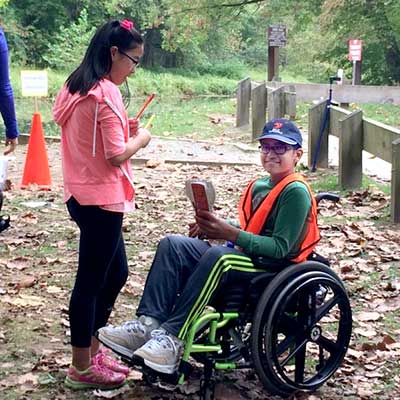MAEOE Maryland Green Schools Program

Founded in 1999, the Maryland Green Schools Program (MDGS) is a sustainable school program that is nationally recognized as having a significant impact on students and schools. The program is aligned with the goals of the 2014 Chesapeake Bay Watershed Agreement and supports Maryland State Department of Education graduation requirements and standards.
This program provides PreK to 12th-grade students with educational opportunities that empower them to make changes to reduce environmental impact, practice environmental stewardship, encourage sustainability, increase awareness of how our relationship with the environment ultimately impacts public health and society and fosters environmental literacy.
There are currently 642 Maryland Green Schools. This is 36% of approximately 2,200 public and independent schools, there are approximately 430,000 PreK to 12th-grade students attending these schools. Green School communities represent a significant opportunity to maintain and improve environmental sustainability, with over 125 million square feet of building space and grounds covering thousands of acres.
Maryland Green Schools benefit from the instructional support and partnership of Green Centers and Green Leaders. Green Schools have access to an extensive network of partners in their community and statewide resources.
Day by day, and activity by activity, students and staff have grown in their knowledge and appreciation of the role each of us plays in making the world greener. With each flower planted and water runoff recaptured, each bird feeder built and placed outside, each rain garden and butterfly garden dug and planted, our students have become better stewards of the earth—and, not surprisingly, better students.
Kathleen M. Kelly, acting principal, Catonsville Educational Center at RICA-Baltimore

Maryland Green Schools as a Sustainable Schools Solution
The Program’s goals are to enrich education by integrating hands-on, inquiry-based instruction, to empower youth to practically apply knowledge at school, home, and in their communities to reduce environmental impact and encourage sustainable practices. As schools reapply every four years, they continue to integrate and reinforce the lessons, resulting in progress toward a more sustainable future. Green School objectives include:
- Environmental issue instruction
- Professional development
- School-wide environmental behavior changes
- Celebration of green practices
- Water conservation & pollution prevention
- Energy conservation
- Solid waste reduction
- Habitat restoration
- Structures for environmental learning
- Responsible transportation & reduced emissions
- Healthy home and school environments
- Citizen/Community Science
- Community partnerships
The Maryland Green Schools award program provides statewide and local county/city recognition and is supported by a network of Green Centers and partners. All Maryland PreK to 12th grade public and independent schools are eligible to apply.
Green Schools and Nationwide Programs
The environmental efforts of the Maryland Green Schools can be used as a platform to apply for the national Green Ribbon School and Eco-Schools USA Certification.
The aim of the U.S. Department of Education Green Ribbon Schools (ED-GRS) is to inspire schools, districts, and institutions of higher education (IHEs) to strive for 21st-century excellence by highlighting promising school sustainability practices and resources that all can employ. Eligibility information can be found here.
Schools may also joint certify with Eco-Schools USA as they work towards Maryland Green School status. The Eco-schools program is a tiered award process. that encourages schools who are challenged with the two-year process to build a portfolio of sustainable school actions to “go for” bronze or silver eco-schools awards.
Benefits of Co-Certification:
- Triple the recognition: State, national and international
- Expanded resources, webinars, and workshops for schools
- Ability to collaborate with schools in other states and internationally
- Additional Opportunities for funding of individual school projects
- Increased Coverage in environmental news and social media for the school
- Access to NWF educational programs
- Build network with MAEOE Green Centers and Green Leaders
- Work done under the MDGS & Eco-School USA programs helps schools meet the U.S. Green Ribbon Schools requirements
Once I started seeing the obvious enthusiasm for environmental topics with my students and the other staff, I was hooked. This is the first time I have seen my students get so involved and committed to work for a common goal.
Barbara Abell, Principal, Mechanicsville Elementary, St. Mary’s County
